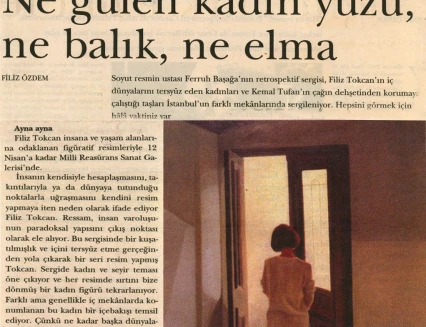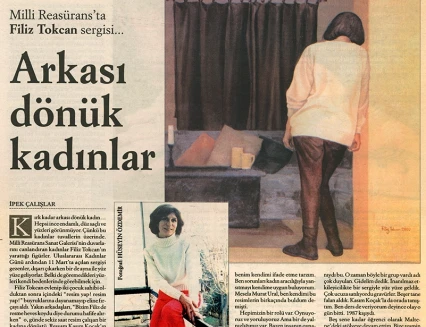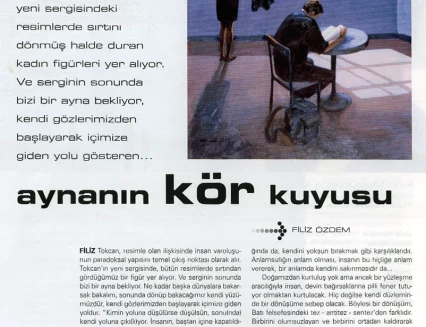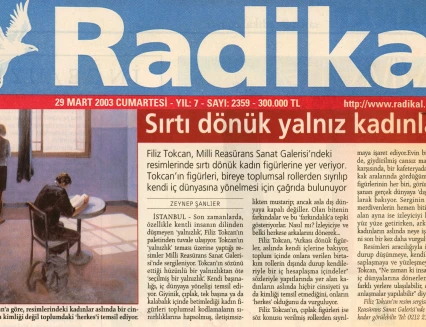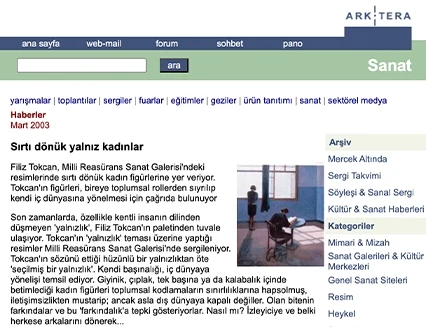Filiz Tokcan at the Millî Reasürans Art Gallery
Filiz Tokcan's figurative paintings focusing on people and living spaces can be viewed at the Millî Reasürans Art Gallery between March 11 and April 12, 2003.
Filiz Özdem evaluates Filiz Tokcan's paintings in the exhibition catalogue as follows: "Women and viewing appear as the starting points that become apparent in this exhibition. This is what is seen. Tokcan, who also pushes us to think about the deceptiveness of appearance, has always carried an attitude in her paintings that prefers to turn things upside down without going from form to form but flowing from within to form. Being a viewer in Filiz Tokcan's painting does not indicate passivity as the word would easily and immediately suggest. Being a viewer is putting reality in brackets with an almost phenomenological attitude in order to stop, look and understand before intervening. Watching is time. It is to give historicity to the transition called duration. It is to classify the reality that changes rapidly around with the effort and patience of a scientist, to look with doubt at its belonging and roots. What is being watched here is not the external world, but the person's own inside. Although we do not see the woman's face, it is obvious that there is an introspection, a reckoning with oneself, a look into one's own labyrinths. In a painting, there is an open wardrobe, clothes displayed on lifeless mannequins in another, and the woman stripping naked and leaning towards the shadows on the wall in another also draw attention. Because confrontation is undressing. From everything that surrounds us like a shell and is symbolized in clothing. Even from one's shadows. After all, shadows are also the clothes of life, or to put it like Plato (as in the allegory of the cave), shadows are not the essence of life but its reflection."
